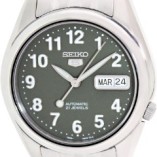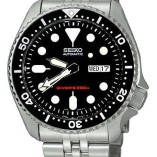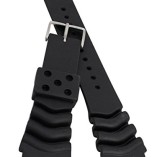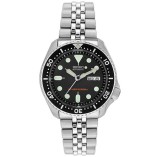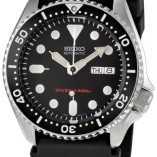What makes and models of wrist watches are used by those in service in the British Armed Forces? This is a question often asked by those looking to purchase a Military style watch. No watches are only made solely for the Military.
In fact the vast majority of ‘squaddies’ will never be issued with a military watch but will have to buy one for themselves! The watch of choice is generally a tough inexpensive watch that will be able to cope with the harsh conditions experienced and a flat regular square size that’s not too big so it doesn’t get snagged and knocked.
For this reason many soldiers on active exercise or deployment wear all-digital Casio G- Shock or a Pathfinders, Timex Ironman or Expedition models, while also some more expensive Vector model Suuntos can be seen.
However it can’t be denied a Casio G- Shock is often the watch of choice. Many believe the G-Shock’s are superior because of their extensive armouring against shocks, so may ideal if you are a gunner in the turret of a Humvees or MRAPS!
As for which G-Shock Watch is best for the task, this is often debated on Watch Forums with input from those using them in the military.
I believe it’s safe to say that the G-Shock watches that have most commonly been seen on a military wrist are DW-6900, G-7900 and G-9000.
Let’s look at those models of watches in a little more detail.
The DW-6900 is a great inexpensive military style watch. It does all of the basics pretty well with buttons that are easy to press. Then there’s the G-7900, which is a little more feature rich, while still being affordable. From there, step up to the G-9000 Mudman which is also a very good and popular choice.
However, most all-digital G-Shock are suitable for general military use, with less moving parts has less chances of failure than an analogue Watch.
The Suunto Vector we mention earlier is shaped in such a way (rounded edges) that it tended to not catch on things and the buttons could be pressed while wearing gloves. However it’s said to have a weaker water resistance. Also the batteries did not last long at all if you use the compass regularly.
However some believe an analogue watch can be advantageous under low light condition or may just be preferred as a different watch in the pursuit of allyness.
I’m going to do a separate post regarding analogue ‘G10’ watches, generally used to describe a basic analogue military timepieces of a uniform format, i.e. steel body, black face and luminosity of a required specification.
But if it is an analogue you prefer, these days, a watch with tritium tubes illumination is useful (constant illumination but not very strong) then many would look at Traser or Luminox watches. They are excellent for nighttime stealthy lume, but they don’t have the same shock protection and are arguably less popular than the cheaper digital watches detailed.
Remember we said that most British military personnel won’t be issued with a watch?
But how about the small number of watches that the British military do procure?
In 2012 the Ministry of Defence confirmed in a freedom of information request.
The following watches were procured by Defence Equipment and Support for UK Armed Forces
General Service Watch
Supplier: Seiko
Model: PXD433
Quantity Issued: 302 since 2009
Aircrew Watch
Supplier: Seiko
Model: PX8307X1
Quantity Issued: 905 since late 2010
Divers Watch
Model: Citizen Model BN0000-04H (Professional Divers watch)
Quantity issued: 855 since 2009
If you are serving in the military we would love to hear you choice and experiences of wearing watches while on deployment.

